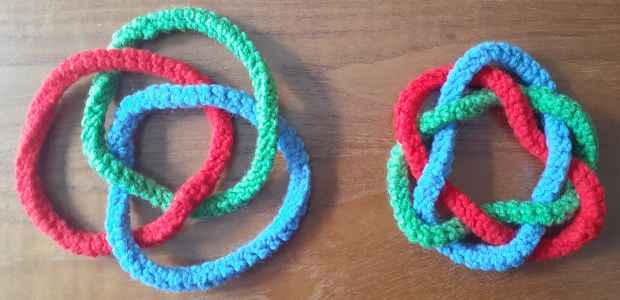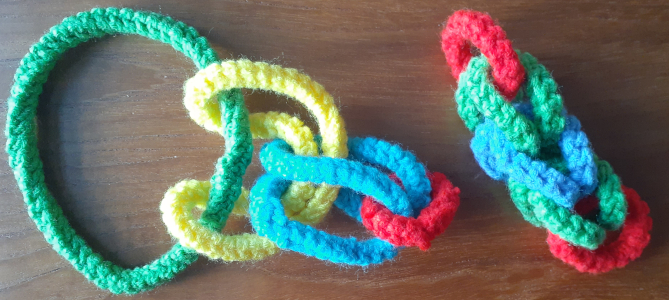13th October 2023, 04:42 pm
4th October 2023, 03:22 pm
3rd October 2023, 11:11 am
The Museum of Mathematics organizes a biannual conference in recreational mathematics called MOVES: Mathematics Of Various Entertaining Subjects. Being a math-recreatinalist myself, I attend all of them. The last one was held in August 2023 and was devoted to the mathematics of Fiber Arts. A few years ago, I wouldn’t have believed I had something to do with the arts. However, in recent years, I started crocheting mathematical objects for my classes, so I not only decided to attend, but also submitted a talk proposal.
The talk proposal was accepted. And, when I finished my slides, I realized that I created too many objects for a 25-minute talk. So, I divided my talk into seven sections and asked the audience to choose. I was lucky that they chose what I was most excited about, but I only had time to cover 4 out of 7 section.
Today I am posting a couple of pictures from my slides that showcase Brunnian links.
A Brunnian link is a set of loops that can’t be separated, but if any one loop is removed, they all fall apart. The most famous example of a Brunnian link is Borromean rings which I already wrote about. In the first picture, the Borromean rings are on the right. They are famous because they are the simplest Brunnian link.
There are two natural ways to generalize Borromean rings. One way is to use the same three loops, but make them twist around each other more. The second way is to increase the number of loops.
The left side of the first picture shows three tangled loops, which are more intertwined than Borromean rings. The crossing number of the link on the left is 12, while the crossing number of the Borromean rings is 6.
The second picture shows two Brunnian links with more than three loops. The left link has four loops, while the right link has five.
Share:






